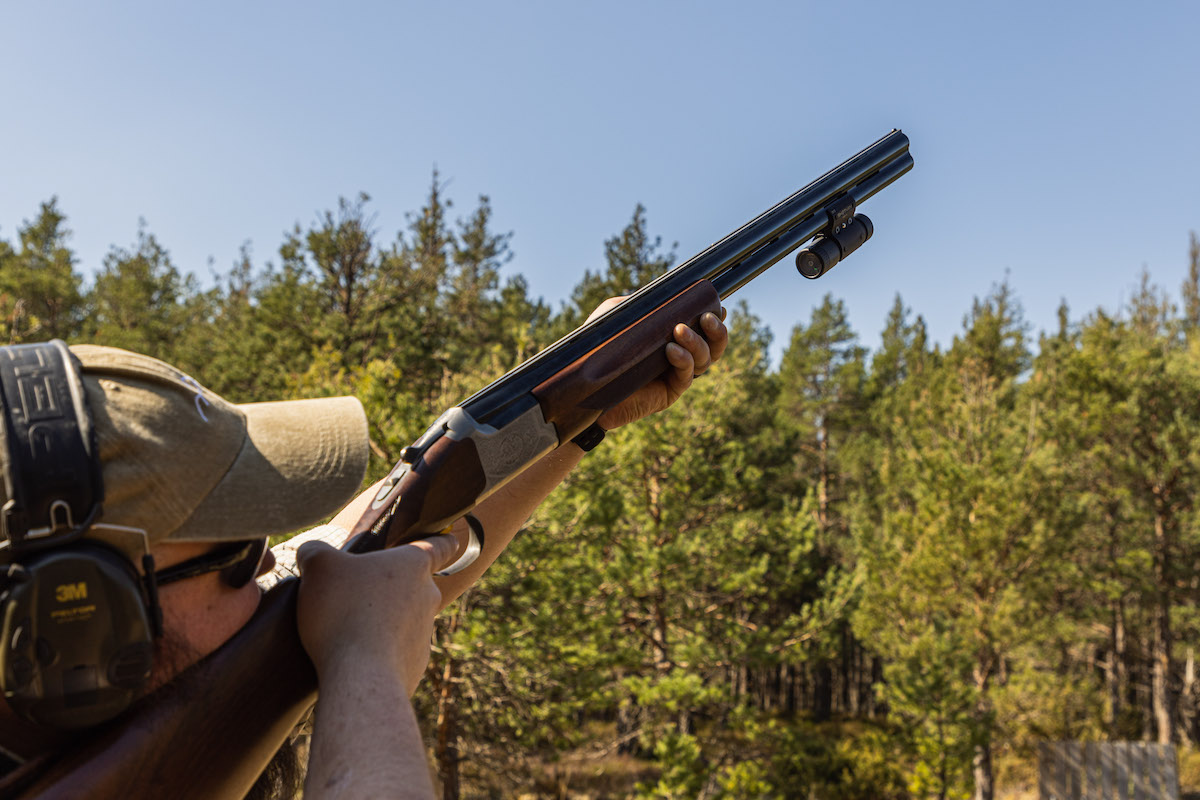Jackal Hi Power .22 air rifle
Though its military look was controversial, the Jackal started the trend of synthetic stocks, says Bruce Potts

The Jackal air rifle was a pivotal design that led to the rise and acceptance of synthetic stock use in Britain today.
Sussex Armoury, the Hailsham-based maker of the Jackal range, was not shy in designing air rifles that caught the eye in the 1970s. Its close association with Sig-Hammerli in Switzerland led to one of the most controversial air rifles of its day, and still divides people’s opinions now.
At its heart is a fairly ordinary side-lever cocking mechanism and a tap-loading pellet system in blued steel. But the pseudo-military look, with its all-black plastic stock modelled on an M16 assault rifle, did not go down well — unless you were a teenager, in which case you instantly loved it!
Surprisingly comfortable
Let’s get the stock out of the way first. Despite its looks, the design is surprisingly comfortable. That is due to a full pistol grip, which is both semi-ventilated and has finger grooves for grip. Coupled to this, the slim and ribbed fore-end and the short 40in overall length of the Hi Power ensure it handles well.
The construction is from tough ABS plastic moulded in two halves and cemented together. It does, however, feel hollow and resonant and acts like a big sound box as you fire the Jackal.
There is a slim plastic butt-pad and two metal wire hangers used for a sling attachment. Though the larger Parabellum model has a dummy magazine, the Hi Power is devoid. It is what it is, but you have to remember that back in the day, there were only highly blued and walnut or beech stock airguns and this Jackal was a revelation. It actually started the trend in synthetic design for stocks, and look at us now — whether you like it or not, it’s a piece of classic history.
Metalwork-wise, there is a nice, rich blued surface on the action and barrel. The mechanism is a side-lever design and, as such, a small pop-out button on its foremost edge is depressed to disengage it from the action. This means you can pull rear-ward to cock the spring piston mechanism. There is a ratchet system so you do not get your fingers caught.
To load a pellet, a large plastic lever is pushed upward 90° to open a tap system and a pellet, .22 calibre only, can be dropped in.
The trigger is poor, to be honest, but safe, which is handy because there is no safety catch and there is a lot of noise on firing. There is not really a spring bounce, but resonance from the stock and the short barrel at 15in has a loud crack to it.
Scopes can be mounted on the twin dovetail rails cut into the action, but there are open sights provided. The foresight is large and military-esque — an adjustable dovetail blade with large side protective wings — and the rearsight sits right at the back of the action, so its aperture-aiming element can be used.
It’s not for everyone, but it’s a slice of British history and, as such, very collectable now as a classic of its time.
What you need to know when buying second-hand Jackal .22 air rifle
Barrel: Only available in .22 so if it has a .177 calibre barrel it’s not original
Action: Check for a smooth operation of cocking lever and loading tap, and action should “Jackal” written on it nad not the later Air Arms logo.
Weight: 7lb 5oz
Length: 40in
Features: Radical ABS stock material as well as styling, love it or hate it!
Importer: Only available second-hand
Prices: Available from £150, up to £300 boxed mint









